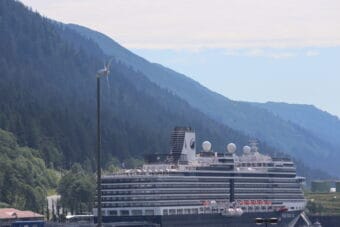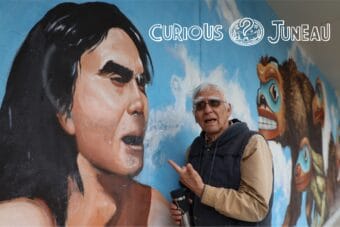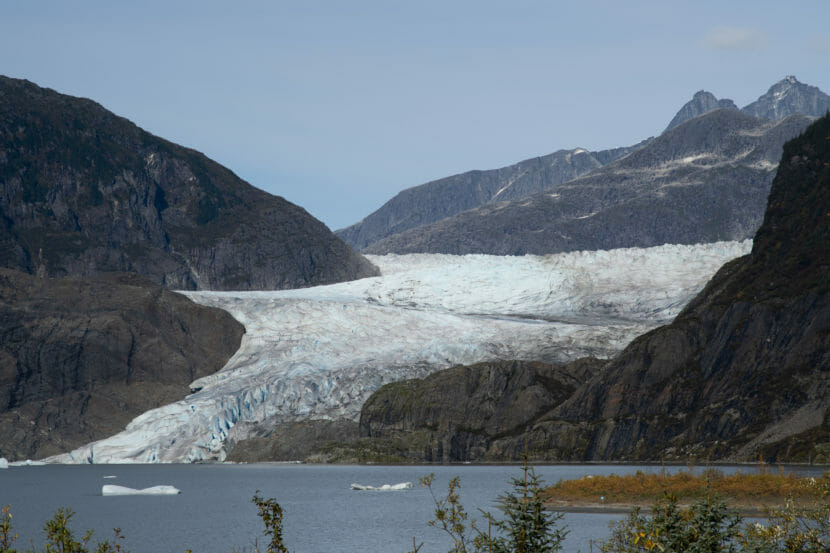
Longtime Juneau resident James Wycoff noticed on his regular walks to Nugget Falls that the face of the Mendenhall Glacier seemed to be retreating faster this year than any year he’s seen before.
“I arrived in Juneau in 1974 as a young pharmacist from Kansas,” Wycoff said. “I had no idea that country as beautiful as that around Juneau even existed. I still haven’t got over it. Every morning I wake up, I feel like I’m in Disneyland.”
For Wycoff, the Mendenhall Glacier is “just such a good example of Juneau — it’s constantly changing.”
When he first saw the glacier in 1974, he remembered that Nugget Falls “poured into the top of the glacier and flowed out through a giant cave in the face of the glacier.” Today, visitors can barely see a corner of the glacier from the falls.
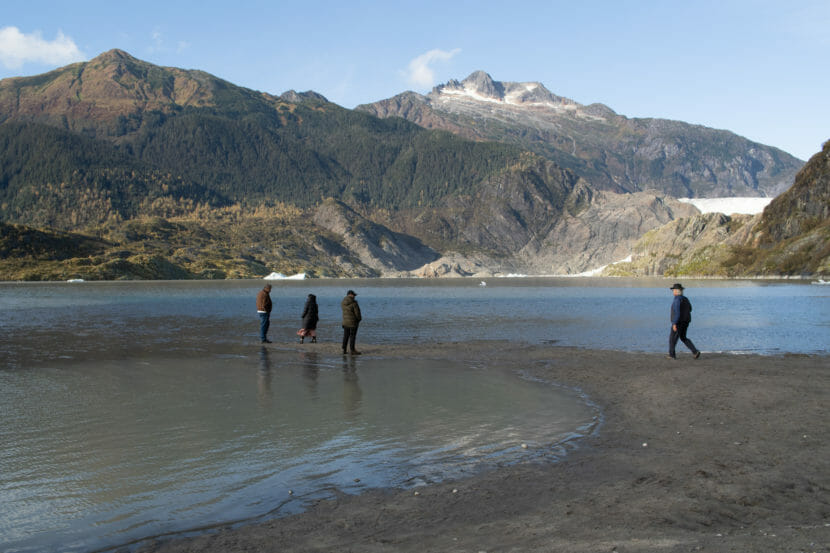
Glaciologist, outdoor guide and Juneau resident Mike Hekkers also noticed that more rock was being exposed at the face of the glacier this year.
“We’re losing that whole left side pretty dramatically in the past 12 months,” Hekkers said.
So how much has it really retreated?
Alaska Science Center geophysicist Christopher McNeil used publicly available satellite imagery to find an answer: between Aug. 30, 2021 and Aug. 18, 2022, the Mendenhall Glacier’s terminus retreated more than 800 feet.
The big picture
For the last two decades, the glacier has “pretty consistently” seen over 160 feet of retreat per year, Hekkers said. From 1999 to 2022, the glacier’s terminus retreated a total of nearly 4,600 feet.
“Nearly all of that retreat occurred along the western half of the terminus, where the west Mendenhall trail leads,” McNeil said.
Hekkers speculated that the seemingly drastic loss of ice in the past twelve months is likely due to the water depth in that part of the lake.
“The ice is flowing downhill, and there’s shallower water on the far left where the remnant ice is stranded and not being re-fed anymore,” he said.
In the next year or so, the glacier will likely retreat out of the lake, Hekkers said. At that point, it will likely slow down because its face won’t be regularly calving into the lake.
“We’ll probably still have small icebergs, but the really big icebergs are going to be a thing of the past within a year or two,” Hekkers said.
Wycoff says seeing icebergs in Mendenhall Lake has always felt special to him. “That’s something you expect to see around Antarctica,” he said.
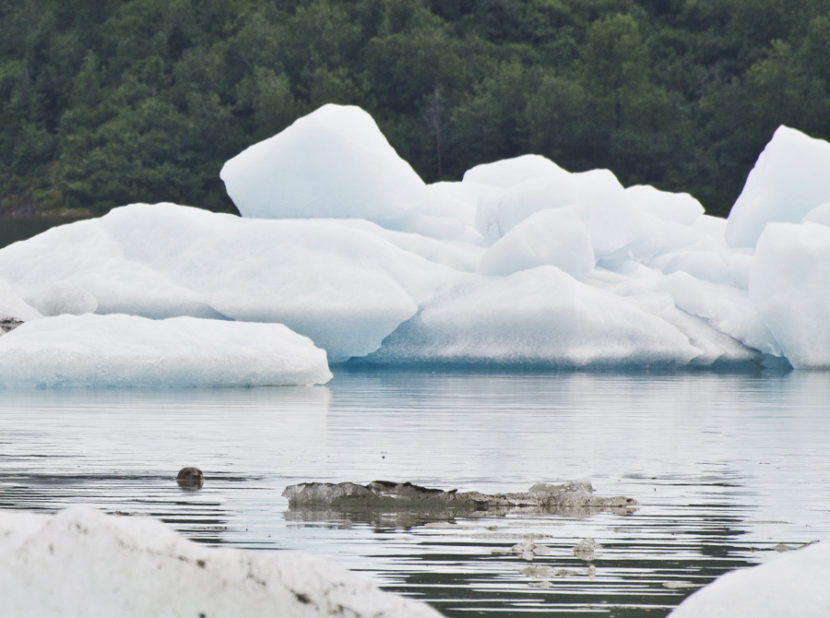
While the terminus retreating is the most obvious change, the glacier is also thinning, and the margins of the glacier are also retreating. Scientists like McNeil use three dimensional models of the glacier’s surface to measure thickening and thinning. A total of 85 feet of thinning was observed between 2000 and 2020.
“There is a seasonal and annual cycle to how a glacier changes,” McNeil said. “They advance forward in the winter because there’s no melt, but hotter, longer summers counteract that. Overall, melt is winning.”
Beyond what visitors see from the trail, McNeil said that the glacial retreat also directly affects the ecosystem as nutrient levels fluctuate and are delivered through freshwater and carried to the ocean. Ultimately, fish populations like salmon are impacted because of changes in water temperature and in the food chain, he said.
What this means for Juneau
Hekkers’ team at University of Alaska Southeast was hired by the U.S. Forest Service to help redesign the Mendenhall Glacier Recreation Area. They determined that the glacier may not be visible from the visitor center in the next few decades and even considered having a “mobile modular visitor center” — taking visitors across the lake on electric boats to have a peek at the glacier.
The impacts of the glacier receding are “on a scale from local to global,” McNeil said. Global sea levels are on the rise, and here in Juneau, McNeil noted that glacial changes mean the ice caves are no longer accessible.
“For a town like Juneau, those activities are keystone activities people like to do,” he said.
Halfway up the Nugget Falls Trail, Wycoff talks about how things might have looked here, long ago.
“This could be the face of the glacier here, standing 150 feet tall, and at one point dropping off all these boulders around here,” he said.
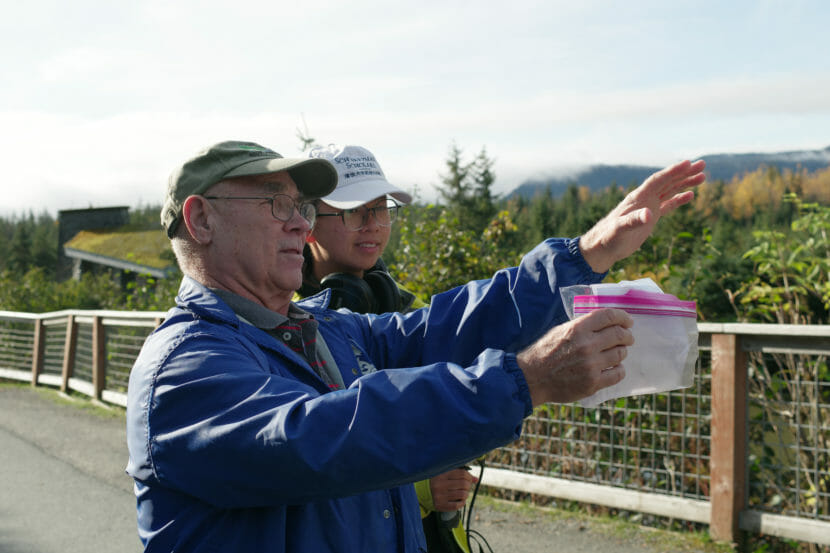
He pointed to a boulder by the trail, which he identified as an ‘erratic’ — a boulder carried down by glacial ice.
“That’s a high-riding boulder, and if it could talk, boy it would have a story to tell about what it was like coming down the valley on the glacier, getting ripped off the side of the mountain,” Wycoff said.
Wycoff says that in time, people in Juneau will have to reminisce about the Mendenhall Glacier.
“Bring out all the stories and say anything you want about the way it used to be,” Wycoff said. “Because the glacier is gone.”
Curious Juneau
Are you curious about Juneau, its history, places and people? Or if you just like to ask questions, then ask away!

